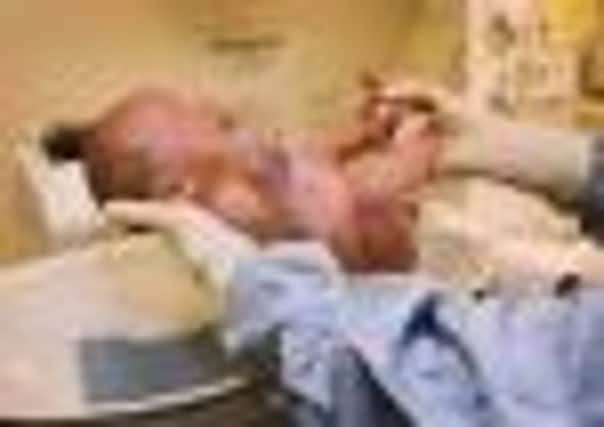Ageing workforce threatens NHS with Scots midwife crisis


The Scottish Government could be storing up trouble for the future unless it addresses the “pressing and growing” need for an influx of student midwives to prevent shortages in hospitals and health centres, the Royal College of Midwives (RCM) claimed.
There has been a 50 per cent increase in the number of those in the profession in Scotland aged over 50 since 2007, with rises in “every age group” above 45.
Advertisement
Hide AdAdvertisement
Hide AdThe report said that there was not a shortage in Scotland’s midwives, a “positive picture” which the RCM said should “be celebrated”.
However, the college’s stark warning that most of Scotland’s midwives were “moving inexorably towards retirement” came as the report showed that the number of trainees taken on annually had fallen since devolution in 1999 from more than 250 to just over 200.
The RCM said: “There has also been a fall in the number of midwives in training in Scotland.
“This situation could be storing up trouble for the future unless long-term planning is in place to ensure that enough new midwives come through to offset this retirement bulge.”
The report talked about a “downward trend” in the numbers going into midwifery in Scotland, and said that the overall trends were “not good”.
It said: “This age profile clearly shows that whilst the number of midwives in Scotland is, broadly speaking, of about the right size, there is a pressing and growing need to bring new, younger midwives into the profession to replace those who will soon, and in increasing numbers, leave because of retirement.
“As the age profile of midwives in Scotland shows, within this positive picture is the issue of an ageing profession, which will increasingly need to be replaced.
“It is not simply the case, however, that a small number have tipped from one side of 45 to the other.
Advertisement
Hide AdAdvertisement
Hide Ad“Indeed, there were rises in every age group from 45-49 and above, the most substantial being a 50 per cent rise in the number of midwives in their early fifties.
“A sufficiently large but essentially static workforce can mislead decision-makers into thinking that all is fine. However, midwives are all moving inexorably towards retirement and will need to be replaced.
“This is not good. Scotland’s midwifery workforce is ageing. What we need to see, therefore, is not a downward trend in the number of new student midwife places, but an upward trend.”
Scottish Labour health spokesman Dr Richard Simpson claimed that the Scottish National Party was to blame because ministers had opted to reduce the number of midwives in training.
He said: “The SNP government cannot avoid taking the blame for this situation as it was their decision to cut the numbers of midwives in training.
“[Health secretary] Nicola Sturgeon also took the decision to close three of Scotland’s midwifery training schools.”
Dr Simpson claimed that at a time when early intervention was being increasingly recognised as important by the government, the SNP had failed to ensure the specialist teams are in place to tackle problems caused by mothers suffering from drug, and alcohol addiction and other mental problems.
“Midwives are ideally placed to do that, but thanks to decisions by SNP ministers their numbers are declining,” he said.
Advertisement
Hide AdAdvertisement
Hide AdScottish Tory health spokesman Jackson Carlaw warned that unless more trainee midwives were taken on “sooner rather than later”, those approaching retirement would not be able to pass on their “vital experience” to new recruits.
He said: “This is an emerging trend within some areas of the NHS, which is also experiencing a fall in the number of health visitors.
“It’s vital that this area of health provision is not overlooked or made to seem less worthwhile. There must be action to attract new recruits to it.”
A Scottish Government spokesman said: “We are working in partnership with our workforce, planning and higher education colleagues to ensure sufficient student midwife numbers meet the predicted future needs of our maternity services.
“This report acknowledges that in Scotland, our midwifery workforce is broadly the right size compared to other UK countries.”